English version.
Hey, hello FungiFriday community, this is my first post here honestly I had already posted similar content but without knowing this site. Although I am a bit embarrassed about my photos compared to some that are taken with professional cameras I want to join the tag and be able to upload some images regarding the latest mushrooms I saw over the weekend.
Although before I didn't give mushrooms the importance they really have, after a biology class in my college career I realized that these little friends deserve more respect and attention.
Now every time I go to a humid place, a forest, a river, or a place where they can grow I look for new mushrooms that I have not seen before to photograph, however the work is a little difficult because due to the quantity it is impossible to know their classification so easily.
In my last trip I photographed 4 different specimens.
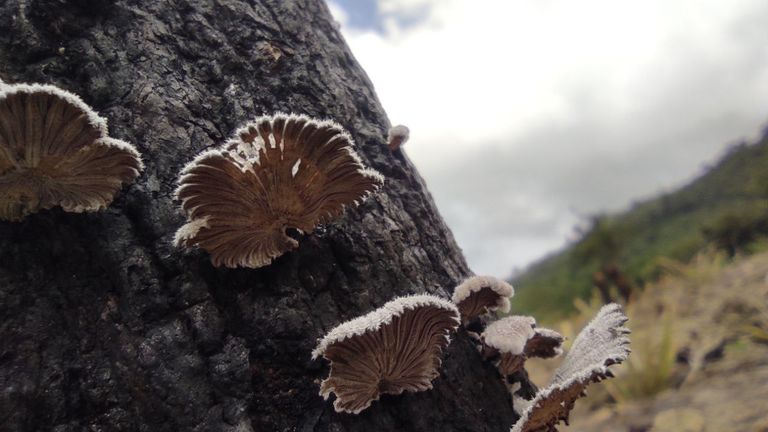
This is my contribution #FungiFriday hosted by @ewkaw
The first one that I saw reproduced in mass, I saw it everywhere was the "Schizophyllum commune or Splitgill mushroom", they are the most common all over the world, they belong to the basidiomycetes division. I know the scientific name because I had seen it before and I was told its name and I never forget it, they are not considered edible, but in some countries they are consumed without any problem, although there are not many.
I have seen them in all types of substrates, rocks although they do not survive if the rock does not have soil, trees, bark, leaves and they proliferate very fast after the rains, the more humid the place the more specimens I found.
These were particularly at the base of trunks that were cut and burned, there were everywhere.
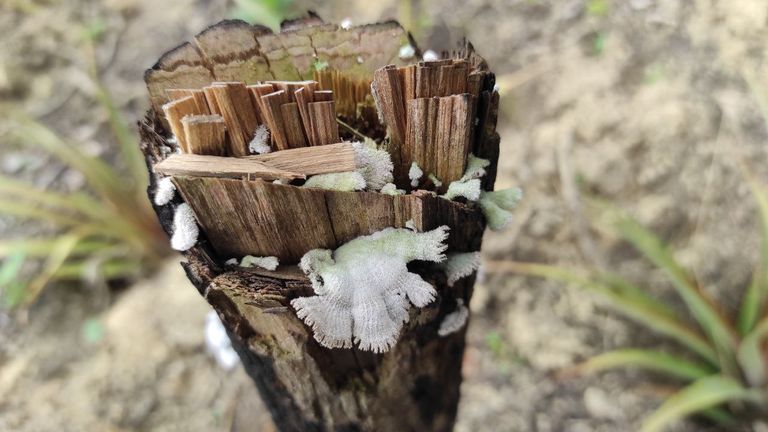


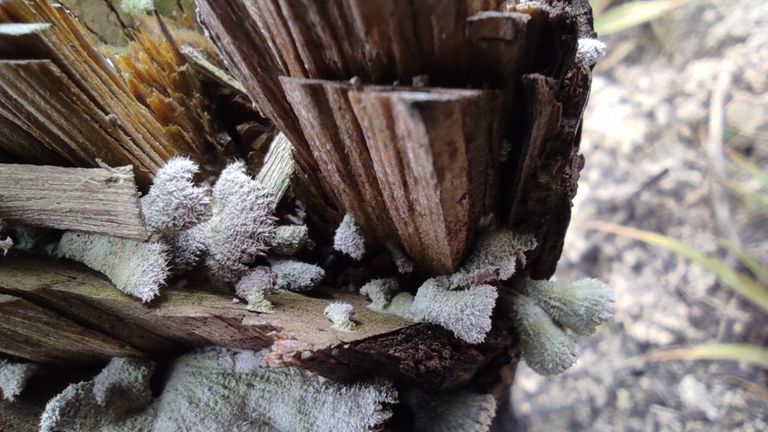

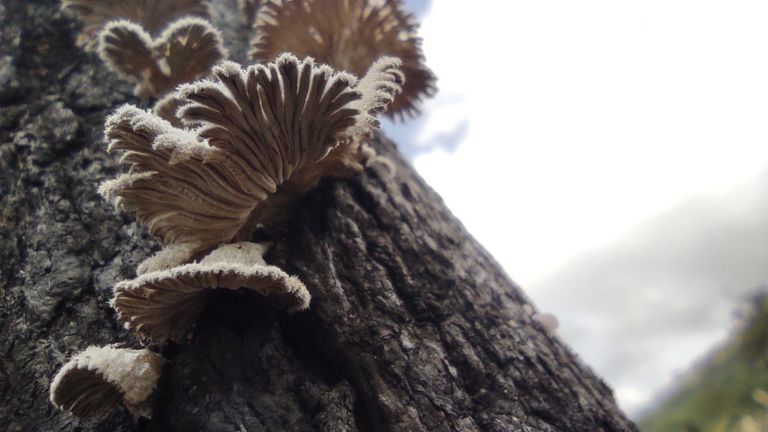
The second specimen was on a trunk still alive, it had much more humidity and moss around it as well as a green pigmentation.
Researching it seemed very familiar and similar to "Lenzites betulina", but I may be wrong, it was the only specimen I saw in the whole mountain and it was under the shade of larger trees.
I am not sure if I am correct with its name, but if anyone knows it, let me know.
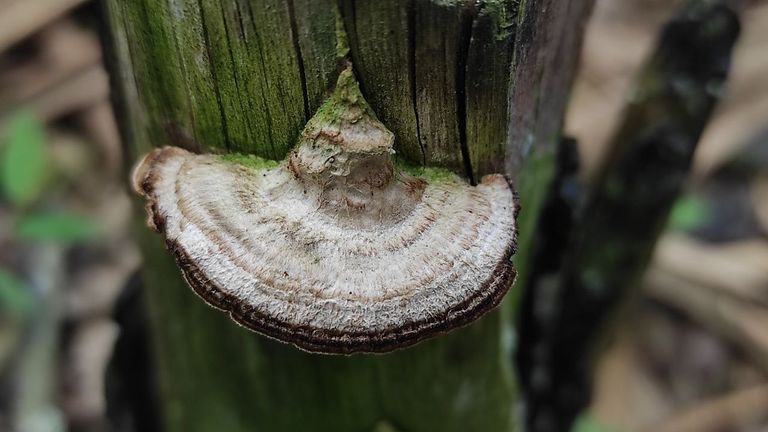


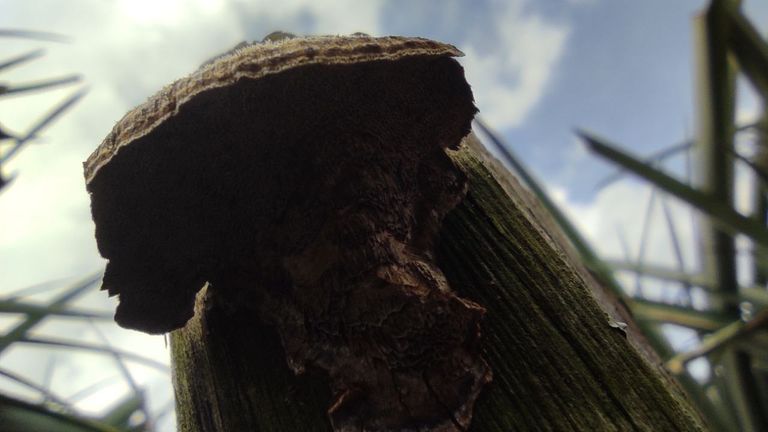
It is the first time I have seen something like this and apparently it was the beginning of the cycle of a "Fomes Fomentarius" according to the closest thing I found on the web, although I am not sure either.
It was also the first and only specimen I saw in the whole area.
(http://www.mycoweb.narod.ru/fungi/Informe/FotoInforme_R1_BVV.html)
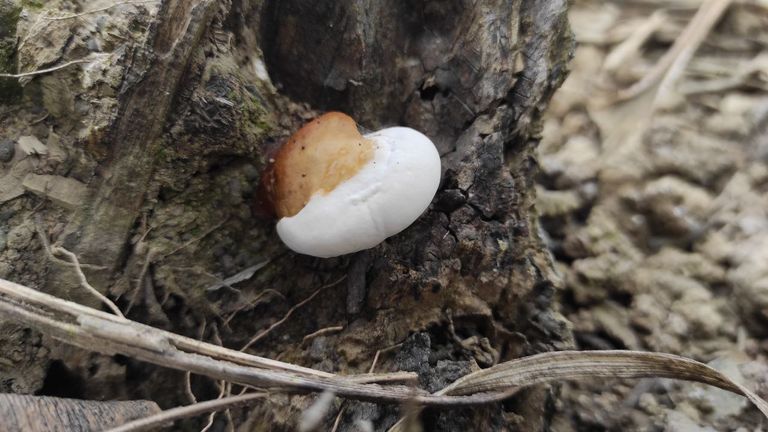
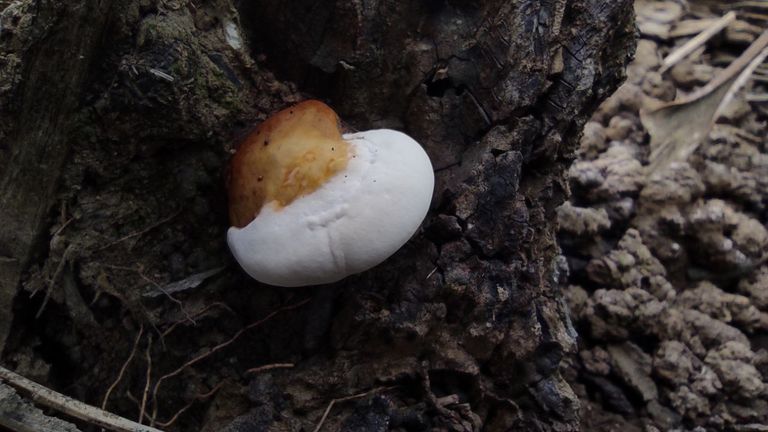
And finally I found "Pycnoporus sanguineus", this if I know it for biology practices, I know that it is saprophytic and basically rots the mother of the trees, it is a fungus that infects bananas so having it near the crops can be harmful. It is not edible, first because its color indicates it and secondly because its texture is hard, the fungus breaks and is exposed to the sun so it has begun to break, I imagine that by very high temperature levels.

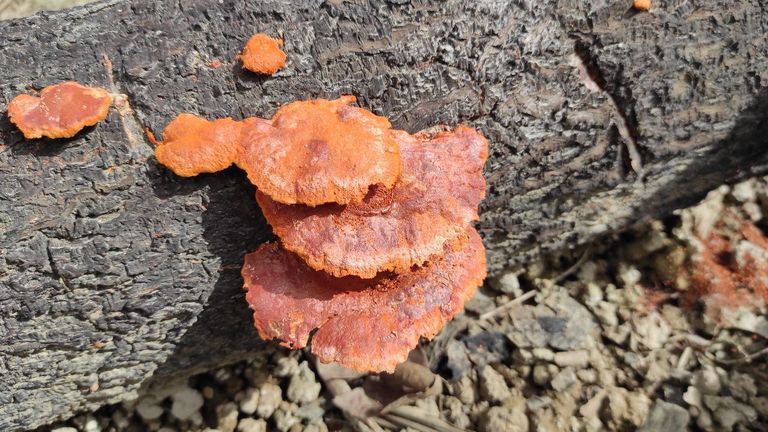

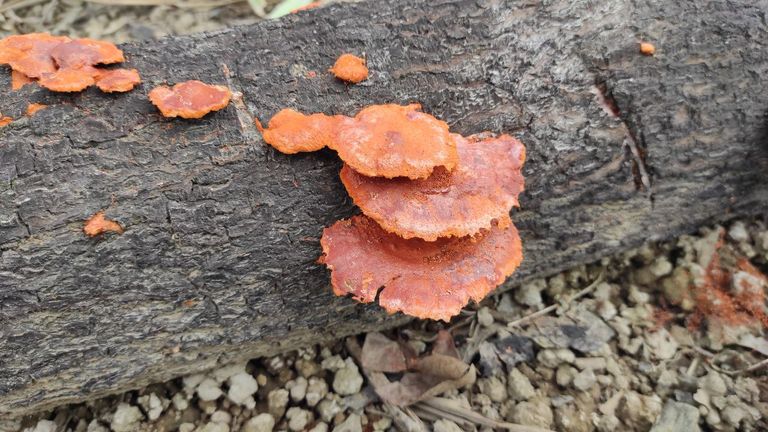
I hope you are all well, and soon I will be able to find new specimens that I can show you.
See you next time.
Versión en español.
Hey, hola comunidad de FungiFriday, este es mi primer post aquí sinceramente ya había publicado contenido similar pero sin conocer este sitio. Aunque me da un poco de vergüenza mis fotos comparadas con algunas que son tomadas con cámaras profesionales me quiero unir a la etiqueta y poder subir algunas imágenes con respecto a los últimos hongos que vi el fin de semana.
Aunque antes no le daba la importancia que realmente tienen los hongos, luego de una clase de biología en mi carrera universitaria me di cuenta que estos amiguitos merecen mas respeto y atención.
Ahora cada vez que voy a un lugar húmedo, algún bosque, rio, o sitio donde puedan crecer busco hongos nuevos que no haya visto antes para fotografiar, sin embargo la labor es un poco difícil pues debido a la cantidad es imposible saber su clasificación con tanta facilidad.
En mi ultimo viaje fotografié 4 ejemplares distintos.

Esta es mi contribución #FungiFriday organizada por @ewkaw
El primero que vi reproducido en masa, lo vi en todos sitios fue el "Schizophyllum commune o Splitgill mushroom", son los mas comunes en todo el mundo pertenecen a la división de basidiomicetos. Conozco el nombre científico por que ya lo había visto antes me dijeron su nombre y jamás se me olvida, no son considerados comestibles, pero en algunos países los consumen sin problema alguno, aunque no son muchos.
Lo he visto en todo tipo de sustratos, rocas aunque no sobreviven si la roca no posee tierra, arboles, corteza, hojas y proliferan muy rápido luego de las lluvias, entre mas húmedo este el lugar mas ejemplares encontré.
Estos particularmente estaban en la base de troncos que fueron cortados y quemados, los había por todas partes.






El segundo ejemplar estaba en un tronco aun vivo, tenia mucha mas humedad y musgo a su al rededor al igual que una pigmentación verde.
Investigando me pareció muy familiar y parecido al "Lenzites betulina", pero puede este equivocado, fue el único ejemplar que vi en toda la montaña y estaba bajo la sombra de arboles mas grandes.
No estoy seguro si estoy en lo correcto con su nombre, pero si alguien lo conoce puede avisarme.




Tercer ejemplar un tanto extraño, muy rígido poco flexible y en una sombra mayor a los anteriores, es la primera vez que veo algo asi y al parecer era el comienzo del ciclo de un "Fomes Fomentarius" según es lo mas cercano que encontré en la web aunque tampoco estoy seguro.
De igual manera fue el primer y único ejemplar que vi en toda la zona.
(http://www.mycoweb.narod.ru/fungi/Informe/FotoInforme_R1_BVV.html)


Y por ultimo encontré "Pycnoporus sanguineus", este si lo conozco por practicas de biología, se que es saprofito y básicamente pudre la madre de los arboles, es un hongo que infecta plátanos por lo cual tenerlo cerca de los cultivos puede ser perjudicial. No es comestible, primero por que su color lo indica y segundo por que su textura es dura, el hongo se quiebra y esta expuesto al sol por lo cual a empezado a quebrarse, imagino que por niveles de temperatura muy altos.




Espero se encuentren todos muy bien, y pronto poder encontrar ejemplares nuevos que pueda mostrarles.
Nos vemos en la próxima.